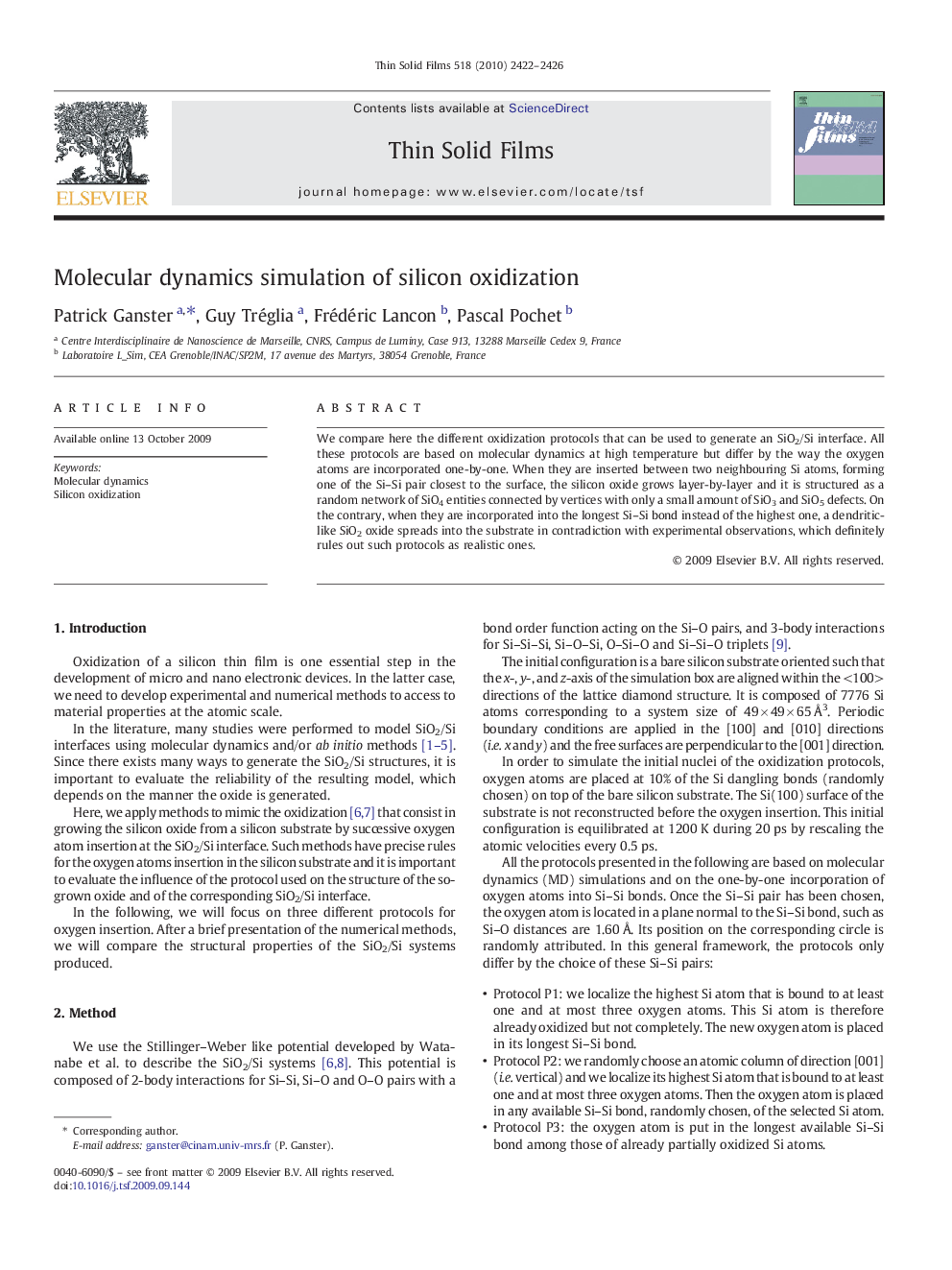| Article ID | Journal | Published Year | Pages | File Type |
|---|---|---|---|---|
| 1671368 | Thin Solid Films | 2010 | 5 Pages |
We compare here the different oxidization protocols that can be used to generate an SiO2/Si interface. All these protocols are based on molecular dynamics at high temperature but differ by the way the oxygen atoms are incorporated one-by-one. When they are inserted between two neighbouring Si atoms, forming one of the Si–Si pair closest to the surface, the silicon oxide grows layer-by-layer and it is structured as a random network of SiO4 entities connected by vertices with only a small amount of SiO3 and SiO5 defects. On the contrary, when they are incorporated into the longest Si–Si bond instead of the highest one, a dendritic-like SiO2 oxide spreads into the substrate in contradiction with experimental observations, which definitely rules out such protocols as realistic ones.
